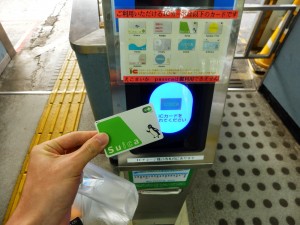Transport policy in the UK looks to shift up a gear with the advent of Brexit, as plans for High Speed 2 and now High Speed 3 for the north of England are being put forward as critical in the UK’s infrastructure plans for the future, along with Crossrail 2 and a third runway at Heathrow.
Transport links across the country are now being talked of as key to the post-Brexit economy. Taking London’s Oyster card as inspiration, Transport for the North (TfN), lobbying on transport across the North and a partnership of elected and business leaders from all areas of Northern England with offices in Manchester and Leeds, has outlined its ambitious plans for the new ‘Smart North’ ticketing system which aims to deliver integrated, easy-to-use, seamless public transport journeys across the North’s transport network. Swift Card is also a new transport smart card which links bus, train and tram travel across the West Midlands. It can store cash, season tickets and other new types of travel products, and other systems are being introduced in other regions.
The UK Transport Secretary Chris Grayling is now promising rail passengers can soon use a pay-as-you-go smart card to take them anywhere in the country, but critics label this plan is unrealistic due to the current system of UK transport and private sector franchising creating significant barriers.
Public transit smart cards in Japan, which saw a successful privatisation of the rail network in the early 1990s, have been widespread since the introduction of ‘Suica’ cards in East Japan in 2001. Japan later saw the setting up of ICOCA in and around the Kansai cities of Osaka, Kobe and Kyoto, and other systems such as SUGOCA in Fukuoka City and the surrounded prefecture on the southern island of Kyushu. As of April 2015, there were 10 prefectures out Japan’s 47 not using these kinds of smart cards, although the Transport Ministry aims to make the whole country compatible by the time of the Tokyo Olympics in 2020.
In March 2007, the Tokyo-area private railways, bus companies, and subways implemented another card, Pasmo, to replace the existing Passnet magnetic card system. Passengers could now use Suica cards wherever Pasmo cards are accepted to ride any railway or bus in the Tokyo metropolitan area. This agreement has since been implemented with other systems across Japan and by March 2013, inter-operation among 10 transportation smart cards across the country started. As of 2014 Suica is interoperable with ICOCA, Kitaca, PASMO, TOICA, manaca, PiTaPa, SUGOCA, nimoca, hayakaken and several other local smart cards.
The cards have been developed beyond just using them for transport. The Suica e-money service was launched in March 2004, allowing passengers to use stored credit at convenience stores, vending machines, restaurants, and other outlets inside station facilities. In 2013, according to statistics from the Ministry of Land, Infrastructure, Transport, and Tourism 78 railway companies around Japan issued 25 kinds of public transit smart card. Around 87 million cards had been issued to Japan’s population of 120 million. Since July 2014, Suica cards also function to pay for Wii U Nintendo eShop digital video games with the NFC function of the Wii U GamePad.
Most major public transit smart cards can now be used to pay for purchases outside stations at more than 200,000 stores nationwide including supermarkets, chemists, and electronics stores. More and more taxis also accept these cards nowadays, making them even handier for urban transportation.
Passengers with compatible mobile phone models can also substitute their phones for smart cards by downloading a Mobile Suica app. It is common to see people tapping their phones against readers to get through ticket gates or to buy drinks at vending machines.
By March, 2013, Suica and nine other cards, accounting for 80 million of the above total, became mutually compatible, including Pasmo and JR West’s Icoca card, (whose name plays on IC and the phrase ikō ka, meaning “shall we go?”) meaning that passengers can travel to nearly half of Japan’s 9,000 stations, also using many bus services with the same card.
Oyster card was launched in London in 2003, only two or so years after Suica in Tokyo, yet while Suica and other similar cards for networks across the country have become more and more interoperable, in the UK the growth of smart cards for public transport outside the capital has been at a very pedestrian pace. Investment in Oyster as part of the TfL London integrated ticketing system has shown benefits for the capital resulting in sustained economic growth, with the benefits of agglomeration from connected transport networks, while ticket integration in the rest of the UK has been slow to take off.
With the push to develop transport networks across the country and introduce smart ticketing, the question is how much longer will the UK have to wait to see a ubiquitous single smart ticketing system for the national transport network, along the lines of the one planned to be in place within three year by Japan’s government by 2020.
Top picture by permission of Tachyamakamui via Wikimedia under the Creative Commons Attribution-Share Alike 4.0 International



